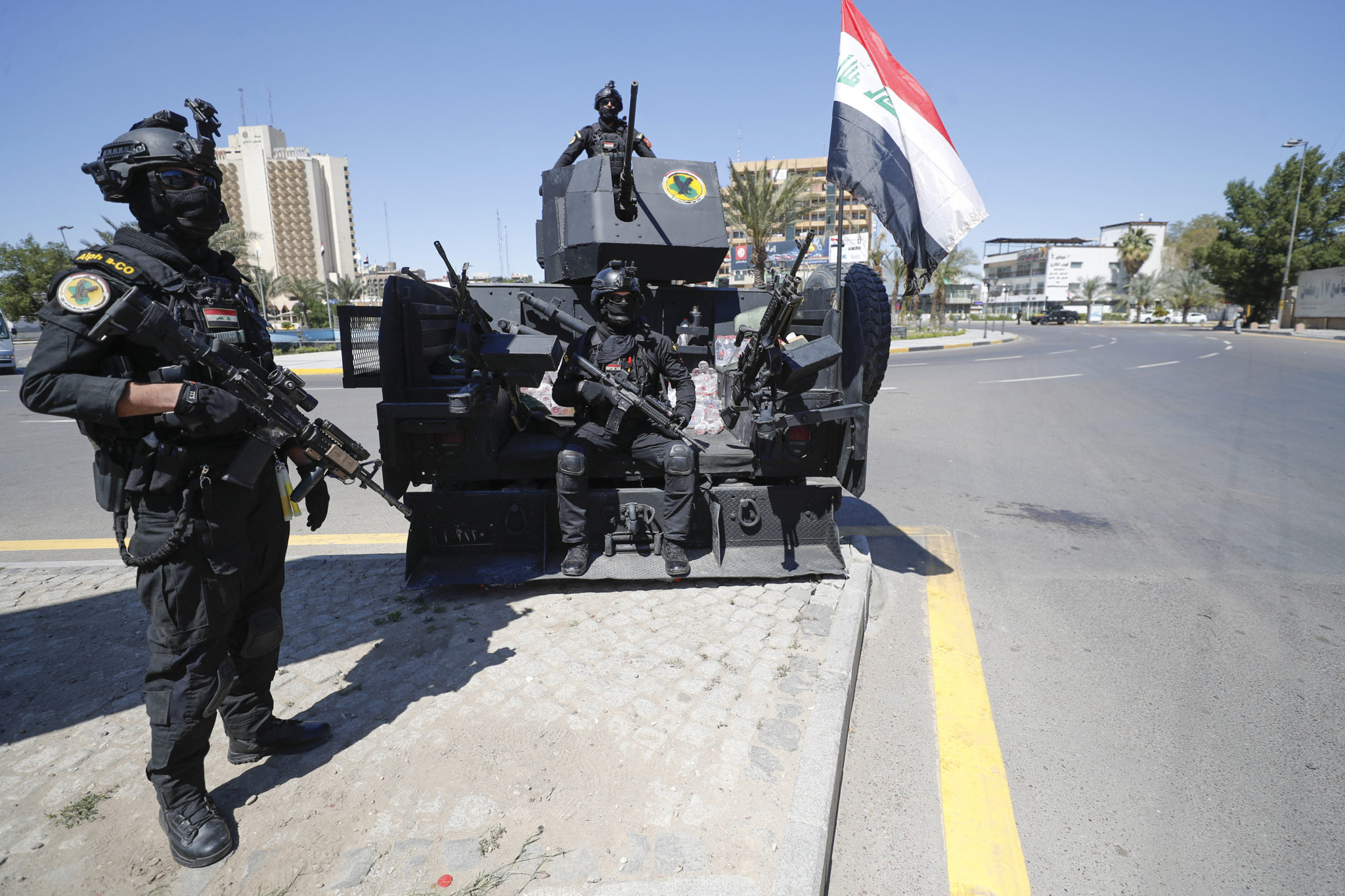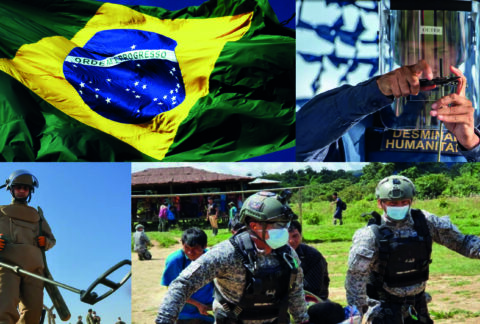Summary
Saudi Arabia and Iran have fueled the conflicts of their neighbors with the aim of achieving regional hegemony, thus positioning governments in their favor. States such as Yemen, Lebanon, Syria and Iraq have been affected by these typical cold war dynamics, in which the conflict is escalating every day due to the support of countries such as the United States and Russia. This paper exposes in a simple way the main factors of this cold war, and how they are related to the strengthening of terrorist groups such as Hezbollah, Daesh, Al Qaeda and others.
Keywords: Cold War, hegemony, national interest, strategy, terrorist groups, Middle East.
Introduction
The conflict between Saudi Arabia and Iran, has come to be referred to as a “Cold War in the Middle East” (Schmitt, 2017); since although these great Arab and Persian powers have not directly confronted each other, they have fueled major regional conflicts in Yemen, Lebanon, Syria, Iraq and in different parts of Africa.
This has strengthened the instability of the region and has become the ideal scenario for the birth of various terrorist groups: Taliban, Al Qaeda, ISIS, Hezbollah and Houthis, who use terror and asymmetric warfare strategies to establish what each of them calls the model of the indicated Islam.
This issue is important because, although in the collective imagination it seems a distant and complex conflict, as Wright (2016) points out, these terrorist groups have objectives at a regional level but also at a global level. Since they seek not only to establish themselves in the region as hegemons, in a zero-sum game, but also aim to dominate the world of the infidels under the Sharia.
However, Russia and the US have worked this region clumsily by creating for themselves new threats, which are not only impressively fast and adaptable, but also highly unstable and difficult to control because of their strategic culture.
Context of the conflict
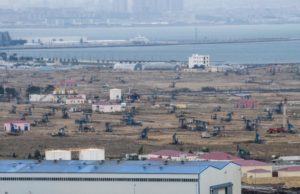
Saudi Arabia is the cradle of the Muslim world, there is Mecca, a place to which every Muslim must travel at least once in life. Likewise, it is a Sunni majority state, with high oil production, whose self-perception is to be a protector of Islam (BBC, 2019). Its allies in the region are the United Arab Emirates, Kuwait, Bahrain, Egypt and it supports the official government of Yemen.
Iran, for its part, is of Shiite majority and since its revolution in 1979, has sought ways to dominate and influence with its own version of Islam (BBC, 2017), representing an important counterweight to Saudi Arabia. Likewise, it is one of the most important oil producers in the world and shares with Saudi Arabia, a large part of the Persian Gulf.
On the other hand, there is Syria, Lebanon and Yemen, which after the Arab Spring have suffered a long civil war, which has been the perfect scenario for the growth of the terrorist organizations ISIS, Hezbollah and Houthis respectively. Iraq, a state that after the US invasion meant a great geopolitical vacuum, exploited by Al Qaeda and ISIS. And more stable countries such as Kuwait, United Arab Emirates and Oman, whose alliances are indispensable for the strategic exploitation of the Gulf.
The Houthis are not the only terrorist group of a Shiite nature in the region; they are also accompanied by Hezbollah. They also represent a major threat to Israel and its borders and, like the Sunni groups, are supported economically and militarily (unofficially) by states in the region.
Finally, for context, it is important to relate Russia as a major ally of Iran and the Syrian government; and the US as a partner of Saudi Arabia and Israel. This uniquely reflects the cold war in the Middle East that serves as a laboratory, whose chemicals can be transformed into very dangerous substances for all those directly or indirectly involved in the region’s conflicts.
Hegemónico players
Due to the geographical importance of the Middle East, the region has always suffered from the constant interventions of the hegemonic powers of the time. However, it is after the First World War, with the disintegration of the Ottoman Empire, that Syria came under French “dominion” or influence, and Iraq, under British.
THE U.S.A., FOR ITS PART, CAME INTO THE U.S.A. The US, for its part, became a predominant actor after World War II and by the end of the 20th century, supported Iraq in its fight against Iran. However, these actions proved to be disastrous over time, since, as Navalón points out, “It was the United States, much more than the USSR, that armed Hussein to the teeth in his ruthless war with Iran, creating an effective and powerful army” (2009, p. 100).
On the other hand, looking at the map, Russia’s need for some kind of influence in the Middle East is evident. Without it, it would be locked into the Black Sea on the western side. It is only logical that Russia requires this area for as Mahan argued:
When the sea not only borders or surrounds a country but divides it into two or more parts, then the sea domain is not only important, but vitally necessary. A country with such a configuration needs to have strong naval power if it is not to be reduced to impotence (Mahan, 2013, p. 317).
It is with all of the above in mind, that both Russia and the US have struggled to have significant influence in the region and thereby secure the Suez Canal and Persian Gulf routes; in addition to having the energy resources that abound in the area.
THE U.S. The US is currently a strategic ally of Saudi Arabia and Israel, with which it intends to establish an important brake on the extension of Iran’s power. The latter is allied with the government of Bashar Al Assad in Syria, and with Russia, who as Laboire rightly points out, “using a policy of fait accompli (…) has managed to modify the balance of power in the Middle East and in the Black Sea, even at a time when it is facing possible cuts in the defense budget” (Laboire,2016).
Now, what is interesting is that Russia and above all the US, seems to be throwing a boomerang again and again to the Middle East seeking to placate perceived threats, which it only manages to strengthen and multiply, to be returned to it with more capabilities than ever. The images of the British and Russian invasions in Afghanistan (whether as Russia or USSR); plus those of the US, torturing civilians and committing atrocities in Iraq (Blumi, 2019) have provoked hatred, repudiation and radicalization of Muslim groups. Simultaneously, the vacuum in Iraq left by the US invasion after the execution of Saddam Hussein, strengthened ISIS and even they also received training from the US (Blumi, 2019). Likewise, Blumi indicates that it would be the terrible techniques used by the US and the systematic tortures, which ISIS would then replicate without any remorse.
This hatred is expressed in the constant terrorist attacks in Europe and in the few that have occurred in the U.S. Threats are also increasing, as was the case of the World Cup in Russia; making it seem that there is no way to end the group due to its high decentralization and its “selfless” way of acting, in the sense that for its militants not even their own lives are important as long as they establish the Sharia or Muslim law throughout the world.
History seems to be repeating itself today, as it is no secret that Saudi Arabia has been repeatedly accused of supporting ISIS, and Iran of supporting Hezbollah and the Houthis. All, terrorist groups with great capabilities to destabilize the order of the Middle East, as Iraq, Yemen and Lebanon prove. Moreover, these are groups that are difficult to negotiate with, as their members are willing to immolate themselves for the cause that they understand has been entrusted to them by Allah.
This seems to be an ignorance or an inadequate classification of threats at least on the part of the U.S. It is evident that as Pedro Baños says,” (…) Russia must be allowed areas of influence and that the keys to power in the world are based on the understanding of other cultures and on the historical expertise that allows to better understand what implications each action has. (Baños, 2017).
The hegemonic struggle of both Iran and Arabia, as well as the US and Russia, has fueled an arms race of all regional actors both official governments, as well as insurgencies and terrorist groups. In this way the Cold War dynamics are still in force, with the US complying with the rules of the International System when it suits it, and Russia vehemently ignoring the actions of its allies as has been its custom (Ulianova, 2002).
On the other hand, it is essential to understand that, as Montero points out, the current scenario is different from the previous ones:
The current scenario is different from previous ones in that it is not an imperial dispute (British period), a strategic-ideological dispute (Cold War) or a unipolar positioning (post-Cold War), but, on the contrary, it is a purely strategic dispute between two powers (Russia and the United States), which without ideological ties compete decisively for the control of resources of the highest strategic value (Montero, 2006).
In this sense, although it is evident that there is a religious component (Shiites vs. Sunnis) in Saudi Arabia’s fight against Iran, there are some basic interests that the US and Russia have in the region, and a change of strategy on the part of the US is necessary to effectively placate the various terrorist groups targeting the Western world.
It should be noted that while Russia and the U.S. have long been rivals, since the missile crisis, it has been shown that neither is foolish enough to produce a nuclear war. However, they continue to fight over areas they consider strategic and in doing so, only create monsters that will then come after them. An example of this, is the US consideration of working with Iran reported by Fernandez (2014) and the statements of Patrick Ellis, Colonel and head of the 2nd Cavalry Regiment, in saying “When we wake up every morning (…) we are focused on the Russian threat.”
By supporting Saudi Arabia and Iran, other religious fundamentalist groups, which are fervent, extremist and openly ignorant of human rights, are being indirectly fed. This, over time, may advance from ISIS to something else, just as Al Qaeda advanced to ISIS, while trying to “fight terrorism globally.”
Regional players
Saudi Arabia and Iran are the protagonists in the Middle East and represent two very important peoples: Arabs and the millennia-old culture of the Persians. Being located in the Persian Gulf, and being both oil exporters, it is only natural that there is competition between them for hegemony in the region. Both were monarchies until the 1979 Iranian revolution drove the Shah and his family into exile, and the Republic of Iran was established.
In addition to their cultural and ethnic differences, both are home to different religions, Arabia with a Sunni majority and Iran, Shiite, as shown in the following maps:
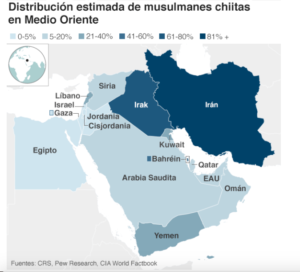
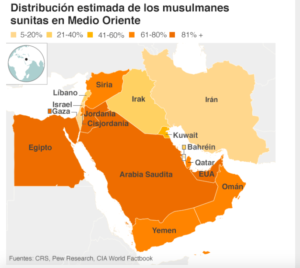
Religion is a very important factor when analyzing the thinking of the area and the way in which they will conduct their strategies. Mainly because as we mentioned earlier, at least from the religious aspect, the game is a zero-sum game. This means that at the regional and even global level, those groups seeking religious power will want to subdue those who have a different religion or even a different stream of the same religion. Because of this, religiously framed cooperation exercises are practically impossible.
This is important not necessarily for Saudi Arabia and Iran, but for the states around them. The large Middle Eastern states do have very different perspectives on Islam and dispute for the leadership of “true Islam” but they are states whose objectives are not purely religious but, like any state, seek their survival and expansion. As Bassets points out:
Saudi Arabia and Iran rival on everything from the price of oil to the leadership of the Islamic world to the war in Syria. It is a struggle for regional hegemony like no other on today’s world map, but it seeks its legendary roots in the dynastic wars for the succession of Muhammad from which the divided branches of Islam emerged (…) Nevertheless … its most immediate origin is the geopolitical vacuum generated by the erroneous strategy of the United States in the region, with the destruction of Iraq and above all of its armed forces after the 2003 war, on the one hand, and the absence of an adequate strategy in the face of the Arab revolts of 2011, on the other. (Bassets, 2016)
In this sense, the conflict does not generate it but is fueled and justified by deep religious differences. Rather, the conflict is generated because both States seek to occupy the vacuums that were occurring in the region due to the events already mentioned: the Arab revolts framed in the Arab Spring and the mistaken invasion of Iraq by the U.S. That is, it is the national interest of these States and their strategies to achieve it, which makes them fight for power. As Castro points out “The national interest (…) is therefore not a fixed, immovable and determined concept but can vary according to changes in social variables and national identities” (Castro, 2010, p.29).
Having clarified the level of importance of religion for Saudi Arabia and the Persians, it is now necessary to clarify why religion in the region produces zero-sum games: terrorist groups.
Jihad means effort and can be interpreted theologically as the effort required to serve Allah by denying oneself and one’s own desires and purposes, or as that effort that is made in making Allah known to the infidels. However, the jihadist terrorist current, of Sunni origin, understands this effort even as the surrender of one’s own life in order to subjugate the infidels by force, if necessary, to the true religion, the Sunni current Islam.
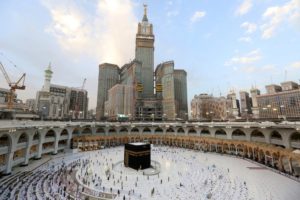
Of jihadist current are the Taliban, Al Qaeda and ISIS. The latter, which is more recent, comes from a faction of Al Qaeda, known as EII or Islamic State in Iraq; and as we have already stated, they use torture without remorse with a deep hatred of Westerners and above all of Americans.
The Taliban, of Afghan origin, took control of Kabul in 1996 (Nestares, 2015, p.3) and to this day they are still at war in this state. Al Qaeda for its part, would seem to be overshadowed by ISIS but as Wright states “It has played the long game, and it may prove to be a more enduring model than the Islamic State” (Wright, 2016, p. 5). These were the perpetrators of the attacks in the U.S., in which the twin towers fell, part of the Pentagon was destroyed, and whose purpose (not achieved thanks to the passengers on the flight) was to attack the White House.
As Moreno points out, Al Qaeda was a real transformation in terrorism. The new terrorism meant a real transformation in terms of nature, aims, means or organization (…) But (…) when we had become accustomed to fighting Al Qaeda, a new group emerged – the Islamic State – that struck in Europe, using Europeans, but with more disorganization than Al Qaeda (Moreno, 2019, pp. 46 and 47).
Al Qaeda managed with the attacks on the U.S. to generate greater awareness worldwide in the fight against terrorism and to evidence on a large scale the consequences of the constant interventions in the region by Western powers. At the same time, it managed to establish a dual strategy, directed against both the so-called near enemy and the so-called far enemy (Nestares, 2015, p. 2).
ISIS “Islamic State of Iraq and the Levant” or Daesh, for its part also seeks the establishment of a caliphate, provides itself with oil smuggling and can be even more cruel than Al Qaeda. We rely on Wright’s words “(…) ISIS’s message is zero-sum; you are either with ISIS, or you are an infidel. It has been prepared to act ruthlessly against those who do not share its hard-line worldview. Its tactics are coercive” (Wright, 2016). In other words, Daesh does not consider shades of gray, but is ideologically prepared to forcibly subdue or eliminate all those who do not align with it.
On the other hand, there are also terrorist groups of Shiite origin. Of special interest to this paper are Hezbollah, of Lebanese origin, and the Houthis, who although an insurgent group, also use terrorist actions and are located in Yemen. These groups in general seek the success that the insurgents had in the Iranian revolution of 1979. In turn, they are supported by Iran, which is why the U.S., in its Defense Strategy, is seeking to establish an alliance with Iran. The US, in its National Defense Strategy, states that “(…) Iran continues to sow violence and remains the most significant challenge to Middle East stability”, blaming them for the constant turbulence in the nation.
Finally, it is important to stress that both Iran and Saudi Arabia support terrorist groups and actions in the region. The United Nations “(…) had verified the deaths of at least 7,700 civilians by March 2020, with most caused by Saudi-led coalition air strikes” (BBC, 2020) in Yemen; and Iran’s links with the totalitarian government and disregard of Human Rights, headed by Al Assad are not a secret.
Interests at stake
Energy assets
According to the United Nations, Saudi Arabia ranks 20th and Iran 29th in terms of gross domestic product (Mena, 2018). This makes the two states, large economies globally which shows their capabilities to pursue their interests in the region, which we will elaborate on later.
Both economies, as shown above, are based on oil representing 80% of Arabia’s income, 45% of its GDP and 90% of its export earnings; in Iran, oil accounts for 80% of its exports (Mena, 2018).
On the other hand: proven oil reserves place Saudi Arabia in the number two position worldwide, and Iran in the fourth with 268,300,000,000,000 and 157,800,000,000,000 barrels respectively (World Atlas, 2017). In terms of natural gas reserves, Iran ranks second with 34,020,000,000,000,000,000 cubic meters, and Saudi Arabia ranks fifth with 8,489,489,000,000,000,000 (CIA World Fact Book, 2017). (Mena, 2018).
The above shows that the great economic capacity of these two states is directly proportional to their dependence on oil and gas, which makes their survival closely linked to the extraction and export of oil.
This is why the countries are important members of the Organization of Petroleum Exporting Countries -OPEC-, in which they establish the prices they require to achieve their objectives as States.
On the other hand, the only ones interested in these goods are not Saudi Arabia or Iran, but the countries of Western Europe, China and even Russia and China. This has been the reason behind the constant interventions of the powers of the International System in the region, and even the invasion of Iraq (which also has large oil reserves) by the US.
Control of the Suez and the Persian Gulf
As Mahan (2013) determined, the use of sea routes has always been sought after because despite the ignorance of them thousands of years ago, they have proven to cut roads, be more economical and even safer, when talking about transporting goods from one place to another.
Just looking at the map of Iran and Saudi Arabia it is evident why they seek to expand their influence to Syria, Yemen and Iraq, and why Saudi Arabia strengthens its alliances with the United Arab Emirates, Egypt and Kuwait. As Mackinder (2010) would call it, the region of the five seas (Caspian, Black, Mediterranean, Red and Persian), has a unique importance as the region that connects Europe, Asia and Africa. He would express that:
The isthmus of Suez divided the maritime power into eastern and western, and the arid deserts of Persia, advancing from Central Asia to the Persian Gulf constantly offered the nomadic power the opportunity to reach the shore of the ocean that separated India and China on one side, and the Mediterranean world on the other.(Mackinder, 2010).
Consequently, it is no surprise that countries seeking significant commercialization in the International System, such as the U.S., or those without the resources they require for their own population, such as the U.K., seek to ensure that these routes are navigable for their ships at the lowest possible cost.
As Mahan states,
The strength of great powers is due to three factors: the existence of naval communication channels that communicate the metropolis with its overseas possessions from where it accumulates and trades raw materials; the existence of a powerful war fleet that complements or supports the merchant fleet; and, finally, strong points on land that offer protection, logistical support and fire support to naval routes and merchant and military vessels. (Montero, Mora & IEGAP, 2016).
Thus, it is only natural that any state with the capacity to do so would seek to exert its power in this five-sea region.
Sacred places
Mecca, the holiest place for the Muslim world, is located in Saudi Arabia. In fact, prior to 1986 its king was given the title of Protector in response to the Iranian threat (Mena, 2018). In this sense, it has been important for both Arabs and Persians to not only protect but to have access to the holy sites located in Saudi Arabia.
Securing that access has a close relationship to the protection of the majority of the population of the states we have referred to, which is Muslim. As Haushofer would say “The duty of a polity, which aims at maintaining its power in the world, is to preserve within its “cultural sphere” (Kulturkreis) – or at least its “cultural country (Kulturland) – its freedom from foreign arbitrariness” (Haushofer, 2012).
It is also important to consider that the terrorist groups we have discussed intend to establish a Caliphate which does not have the same perception of respect for the borders of other states. These groups wish to increase the size of their “ideal state”, as they call it, using terror without any moral consideration other than to expand the kingdom of Allah.
In this regard, Ratzel’s words can be applied when he says that “The size of the state increases with its level of culture. The expansion of geographical horizons, the product of the physical and intellectual efforts of countless generations, continually offers new areas for the spatial expansion of populations” (Ratzel, 2011, p.138); that is to say that by imposing religion, groups such as Hezbollah or Daesh, will necessarily have an expansion of territorial control that may come to modify the borders as we know them so far.
Ratzel also argues that,
To dominate these areas politically, to merge them and hold them together, new forces are required that can only be generated gradually by and through culture. Culture increases the bases and means for the cohesion of the members of a population and continuously extends the circle of those who are bound together through the recognition of their homogeneity (Ratzel, 2011, p.138).
From the above, there remains no doubt once again, that cultural understanding is essential as a key to power in the world, as Pedro Baños (2017) argues.
Maintaining influence
It is clear to this point that when we refer to a Cold War in the Middle East, we are not only talking about the tug of war between Saudi Arabia and Iran, but a renewal of the Cold War between the US and Russia. Russia has been renewing itself under Putin, and is no longer in defensive realism, but has gone on the offensive.
Of the above Crimea proves, but in this region Russia has managed to consolidate Iran’s power and maintain the Al Assad regime, after a little less than 10 years of Syrian conflict.
In the same way, ISISI and other groups, develop their tasks throughout the Middle East, North Africa, the Horn of Africa and Central Asia with a clear intention to establish their version of Islam as they see fit. The US, Europe and Russia, for their part, do not hesitate to overthrow and overthrow any government in the area, in order to install regimes that easily align with their own interests.
As Dallanegra rightly states: The same can be said, in the 20th century, of the presence of the United States in the Middle East and its interventions and/or pressures on countries such as Afghanistan, Iraq, Iran, etc., or the interest in controlling governments in Latin America under the slogan of defending democracy. In this case, interventionism was legitimized by the United States through a moral, which in the Cold War was the anti-communist crusade of Harry Truman and George Kennan. For Truman, the policy of containment of communism – outlined by Kennan-16 was the way to satisfy security and find a way to either increase his power or, at least, to maintain a balance of power. For George W. Bush, it was the fight against terrorism. Thus, the “moral” of US foreign policy has been “us” and “them”, the “good” and the “bad”, the “free” and the “oppressors”, and the United States as the only one that can save the world (Dallanegra, 2009, p.20).
Strategy of the parties and media involved
Sanchez (2013) proposed the following strategy formula that we will use:
E = F + Me + Mo + R + EA + En
Strategy = Ends + Means + Modes + Risks + Adversary Strategy + Environment.
We have indicated the ends above by pointing out the interests of each of the parties. Now, in a short form we will show the means and modes used; and how the risks, the environment and the strategy of the adversary, must be taken into account to achieve the stability of the region.
Añorve points out that:
In the 2013 PSC, for the first time since the disappearance of the USSR, there are geographical mentions beyond the near abroad; there is talk of Russian concern about instability in North Africa and the Middle East, although the Russian stance towards Libya was much more passive than towards Syria, a country where it is one of the powers with a more active involvement (Añorve, 2019, p.57).
This shows that Russia has been renewing itself and that this implies a strategy in the Middle East. For this, it seeks “(…) to support the permanence of the regime of Bashar al-Assad as the only “legitimate” power in Syria and to prevent regional disorder from influencing the radicalization of their respective Muslim populations, of those in the North Caucasus” (Milosevich, 2019, p. 6). However, Russia is not an economically strong state and this limits it in its influence capabilities.
For its part, the US remains the country with the greatest economic and military capacity at the moment, but even so its strategies have not proven to be very effective in the region; on the contrary, they have been returned to it time and again, as demonstrated by 9/11, a consequence of the support provided in the Iranian-Iraqi wars, counting the Gulf War.
In this sense, we support Anderson et. When they express that “The U.S. must shift from a mostly cooperative approach towards Russia to one that recognizes the competitive nature of Moscow” (Anderson, 2015); as this will allow it to better control these groups that are highly difficult to control, and whose actions, interests and purposes benefit neither Russia, nor the U.S..
From another angle, it is worth reviewing Saudi and Iranian capabilities:
Iran has an aging fleet of MIG-29, Sukhoi Su-24, F-14 Tomcast aircraft; in contrast, Saudi Arabia’s air force is one of the most powerful in the Middle East, with an arsenal of F-15 fighters, Euro Typhoons and Tornados (Liebl, 2012, p. 8). In the naval field Iran has numerical superiority and the CGRII small boat flotilla has developed remarkable asymmetric warfare skills (Cordesman, 2004, p. 266). (Mena, 2018).
These capabilities are used with a strategy similar to that of the U.S., of condemning everything the adversary does, and justifying one’s own actions in the name of the good, the just and the right. Thus, according to Saudi Arabia, everything the Iranians do will be to destabilize the region, to support terrorists and against the order of the International System; so will be everything the Arabs do under the perspective of the heirs of the Persian kingdom.
Finally, it is worth remembering the strategies used by terrorist groups, which apart from obviously terror, have to do with the propaganda they use in the different territories they reach.
Hezbollah is currently in Lebanon and Israel feels its threat. In this regard, the U.S. and Israel have cooperated with the Iraqi government to respond to this terrorist group and Iran has been accused of sponsoring both this group and the Houthis who lead the revolution in Yemen, but who have also perpetrated terrorist actions as we have shown previously.
On the other hand, the Islamic State, ISIS, ISIL or Daesh, continue to expand in North Africa, the Middle East and Central Asia. Their presence has even been found in some places in Europe, and within the geographical area they claim is Andalusia (Nestares, 2015, p.2). In the same way, Al Qaeda and the Taliban support Daesh in certain tasks, and in this way expand the damage they can achieve.
Al Qaeda, according to Wright (2016), has more hope of survival than ISIS, as the latter in the midst of its rapid action does not necessarily have a long-term strategic timeline.
It is also necessary to point out that despite the US Effort its action is deteriorated and starts to have a very low and serious deficit such as: “(…) not having reliable allies in the region, with the exclusion of the Kurds who do not have such a power to be able to project themselves on Syria” (Burweila, 201 4, p. 3). They even sent economic aid to the opposition of Bashar Al Assad, with the conviction that these would win.
Conclusions and prospective analysis
Terrorist groups have shown great capacity to adapt and learn various techniques to wage war. That is why today they have the capacity to shake states, waging war in a hybrid way, i.e. with both symmetrical and asymmetrical warfare capabilities.
Therefore, it is certain that these groups will continue to mutate and perhaps in ten years there will be new ISIS, new Hezbollahs or new Al Qaedas with a capacity that remains to be seen. Apparently, they have the facility to learn from their enemies, and that is something that regional and world powers must take into account.
From this perspective, cooperation between Russia and the U.S. is more necessary than ever. Both have demonstrated their desire for hegemony and their ability to achieve important zones of influence. However, underestimating the potential of the current threats could bring surprises less than those of September 11, 2001.
For their part, Saudi Arabia and Iran will continue to strive to consolidate their power as far as they can. Their strategic history shows that this is not close to changing and that cooperation is not an option they really consider. Therefore, it is in the hands of those who will be most affected by terrorism (not only in the sense of death toll but in the demoralization of the state) to find strategies that are efficient and effective.
References
Anderson, G. K., Kooij, G. J., Briggman, K. L., Hilbert, J. E., Lay, C. T., McNaughton, J. C.,
& Deni, J. R. (2015). From Cooperation to Competition-The Future of US-Russian Relations. ARMY WAR COLLEGE CARLISLE BARRACKS PA STRATEGIC STUDIES INSTITUTE.
Añorve, D. (2019) The geopolitical game of post-Soviet Russia: understanding it through five circles. Revista Mexicana de Política Exterior, (115), 45-67.
Baños, P. (2017, December 12). The keys to power in the world. Retrieved from https://www.youtube.com/watch?v=_SYUYFM3eGQ
BBC (2017, November 23). 6 keys that explain the historic feud between Saudi Arabia and Iran. Retrieved from https://www.bbc.com/mundo/noticias-internacional-42036451
BBC (2018, September 24). Iran country profile. Retrieved from https://www.bbc.com/news/world-middle-east-14541327
BBC (2019, October 4). Saudi Arabia country profile. Retrieved from https://www.bbc.com/news/world-middle-east-14702705
Blumi, I. (2019). A Theory of ISIS: Political Violence and The Transformation of the Global Order.
Burweila, A. (2014). How to lose a war: when your allies help your enemies. Research Institute for Europe.
Dallanegra Pedraza, L. (2009). Decision-making and power building from structural systemic realism. Revista de Relaciones Internacionales de la UNAM, (104).
De Castro, R. D. H. (2010). The concept of national interest. In Evolution of the concept of National Interest (pp. 17-38). Spanish Institute for Strategic Studies.
Haushoffer, K. (2012). The Geographical Foundations of Foreign Policy. Geopolitics, 3 (2), 329-336.
Laboire, M. (2016). The national security strategy of the russian federation (December 2015). bie3: IEEE Bulletin, (1), 715-725.
Mackinder, H. (2010). The Geographic Pivot of History. Geopolitics, 1 (2), 301-319.
Mahan, A. (2013). Analysis of the Elements of Naval Power. Geopolitics, 4 (2), 305-334.
Mattis, J. (2018). Summary of the 2018 national defense strategy of the United States of America. Department of Defense Washington United States.
Milosevich, M. (2019). Bear and dragon: The strategic link between Russia and China in the post-unipolar international order. Analysis of the Elcano Royal Institute (ARI), (1), 1.
Moreno, A. P. (2019). The evolution of terrorism from Al Qaeda to ISIS: organization, methodology and profiles. Reason and Faith, 279(1437), 35-48.
Montero, A., Mora, J. G., & del IEGAP, A. (2016) GEOPOLITICS AND GEOTHETRATEGY OF THE MIDDLE EAST. Universidad Militar Nueva Granada.
Mena, S. M. (2018). Iran and Saudi Arabia, geopolitical rivalries and confrontation scenarios. OASIS: Observatory for the Analysis of International Systems, (27), 47-66.
Navalón, A. (2009). Paren el mundo que me quiero enterar guía para comprender los conflictos de nuestro tiempo. Random House Mondadori.
Nestares, F. R. (2015). Global jihadism and terrorist threat: from Al Qaeda to the Islamic State. Revista de Occidente, (406), 5-19.
Ratzel, F. (2011). The Laws of the Spatial Growth of States: A Contribution to Scientific Political Geography. Geopolitics 2 (1), 135-156.
Sánchez Hurtado, J. R. (2013). In the minds of strategists. do you know your strategic performance curve?. Escuela Superior de Guerra. Bogotá, Colombia.
Ulianova, O. (2002). The USSR and the Arab countries during the Cold War. University of Chile (24).
Wright, R. (2016). The jihadi threat: ISIS, al-Qaeda, and beyond. United States Institute of Peace.
Disclaimer: The views and opinions expressed in this article are those of the author. They do not necessarily reflect the official policy or position of any agency of the U.S. government, Diálogo magazine, or its members. This Academia article was machine-translated.

